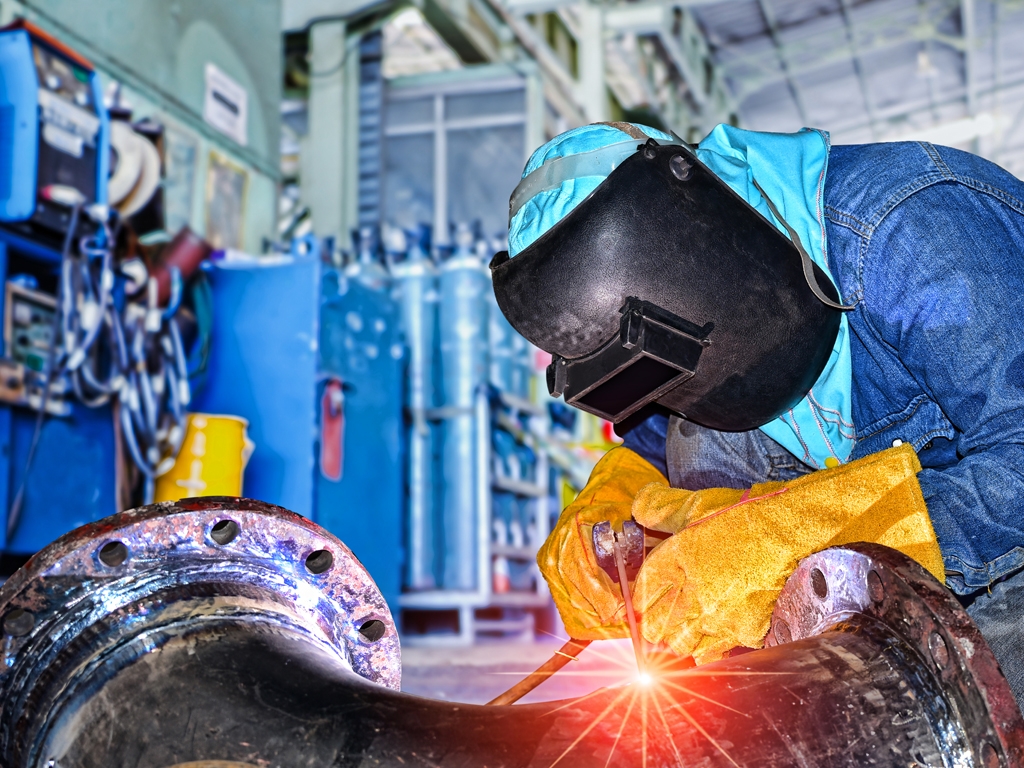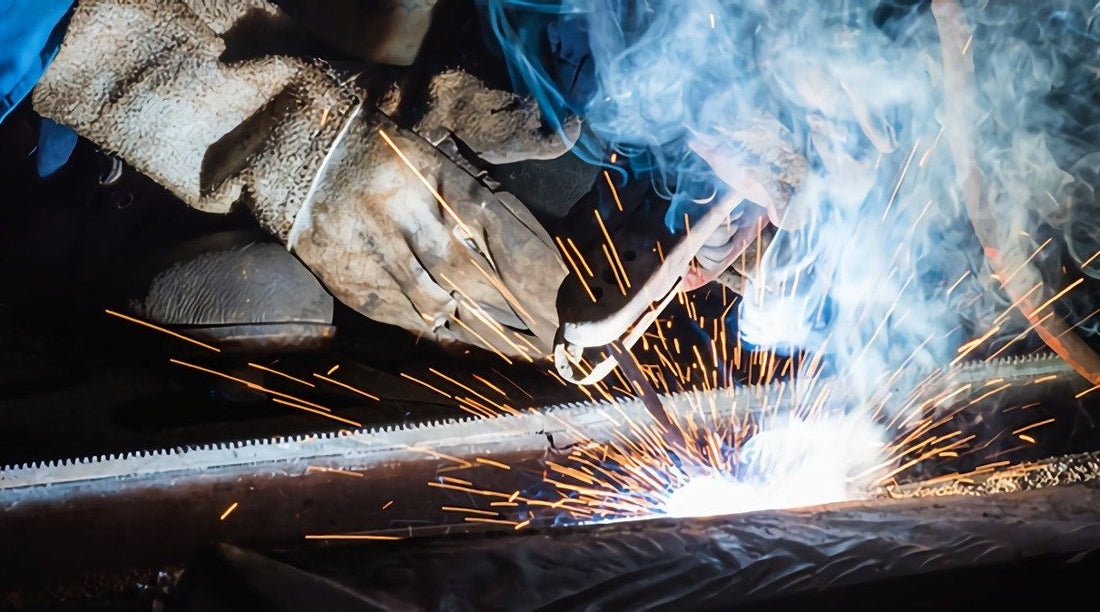All Regarding Welding: Secret Insights Into Techniques and Finest Practices for Success
Welding includes a variety of techniques, each matched for particular products and applications. Understanding these approaches, such as GMAW, SMAW, and TIG, is crucial for attaining ideal results. The appropriate equipment and safety techniques can not be ignored. As preparation and troubleshooting play crucial roles in the welding procedure, mastering these aspects can substantially improve the quality of the final item. What are the essential elements that assure an effective weld?
Understanding Various Welding Methods
Welding techniques include a selection of techniques, each matched to certain applications and materials. Amongst the most usual strategies are Gas Steel Arc Welding (GMAW), Protected Metal Arc Welding (SMAW), and Tungsten Inert Gas Welding (TIG) GMAW, likewise referred to as MIG welding, is prominent for its rate and flexibility, making it ideal for thin products. SMAW, or stick welding, is favored for its simpleness and effectiveness in exterior environments, especially with thicker metals. TIG welding offers accuracy and control, making it suitable for elaborate work and non-ferrous metals (Montana Mobile Welding and Repair Belgrade Fabrication). Each strategy has its unique benefits and factors to consider, enabling welders to pick the most effective approach based on the job's needs, product kind, and preferred end results. Comprehending these strategies is important for effective welding
Important Welding Devices and Tools
While numerous welding strategies call for details skills, the best tools and devices are just as vital for achieving top quality outcomes. Crucial welding tools includes welding makers, which vary depending on the technique-- such as MIG, TIG, or stick welding. Safety gear, consisting of handwear covers, headgears, and aprons, guarantees safety and security and convenience throughout the process. Furthermore, fixtures and clamps assist protect materials in position, guaranteeing accuracy in welds. Consumables like welding poles, cord, and shielding gas are additionally crucial parts that affect the high quality of the weld. Devices such as cutters and mills help with surface preparation and post-weld finishing, adding to an expert result. Buying high-grade equipment eventually enhances the effectiveness and performance of welding tasks.
Security Practices in Welding
Proper safety techniques are vital in the welding industry to safeguard employees from prospective hazards. Welders need to wear ideal personal safety devices (PPE), consisting of helmets with correct shading, handwear covers, and flame-resistant clothing. Sufficient ventilation is vital to minimize direct exposure to unsafe fumes and gases generated during the welding process. Additionally, employees must be trained in the proper handling of welding tools to avoid mishaps. Fire precaution, such as keeping flammable materials far from the welding location and having fire extinguishers readily available, are essential. Normal assessments of equipment and work spaces can help identify prospective dangers prior to they result in accidents. By adhering to these safety methods, welders can create a safer working atmosphere and decrease threats connected with their profession.
Readying Products for Welding
Preparing materials for welding is a vital step that greatly influences the quality and stability of the last item (Belgrade). Proper prep work includes cleaning up the surface areas to eliminate contaminants such as dirt, oil, and corrosion, which can endanger the weld. Strategies such as grinding, sanding, or using solvents are commonly used to attain a tidy surface. Furthermore, guaranteeing that the materials mesh snugly is crucial; voids can result in weak welds. It's likewise important to consider the positioning and positioning of the elements, as this will affect the simplicity of welding and the final end result. Ultimately, picking the appropriate filler product and making sure compatibility with the base metals is necessary for attaining solid, resilient welds
Tips for Achieving High-Quality Welds
Accomplishing premium welds calls for focus to detail and adherence to ideal techniques throughout the welding procedure. Proper joint preparation is essential, ensuring surface areas are tidy and free from pollutants. Selecting the appropriate filler material and welding technique based upon the base steels is critical for optimal bonding. Keeping constant traveling rate and angle while welding can promote and prevent problems harmony. In addition, controlling heat input anchor is important; too much heat can result in bending and weakened joints. Consistently inspecting the welds throughout the procedure enables instant changes if required. Ultimately, using suitable post-weld treatments, such as cleaning and tension alleviation, can improve the resilience and honesty of the weld, ultimately ensuring a successful outcome.
Troubleshooting Common Welding Issues
Welding commonly provides difficulties that can affect the high quality and stability of the final product. Usual problems such as porosity, irregular weld beads, and getting too hot can emerge, each needing details repairing strategies. Comprehending these problems is vital for welders to improve their skills and achieve perfect outcomes.
Porosity Issues Explained
Porosity can commonly be ignored, it remains a vital problem in welding that can jeopardize the honesty of a completed item. Porosity describes the visibility of tiny gas pockets within the weld bead, which can compromise the joint and lead to early failure. This trouble typically develops from contaminants, moisture, or improper protecting gas protection throughout the welding procedure. To mitigate porosity, welders need to validate that the base products are tidy and dry, make use of suitable securing gases, and keep constant welding criteria. Routinely examining the tools and atmosphere can additionally aid recognize possible issues prior to they show up in the weld. Addressing porosity successfully is crucial for attaining solid, long lasting welds that satisfy high quality standards.

Inconsistent Weld Beans
Inconsistent weld grains can substantially impact the high quality and toughness of a finished product. Various elements add to this problem, including inappropriate travel rate, incorrect amperage settings, and inconsistent electrode angles. When the welder moves as well quickly, a grain may appear narrow and do not have penetration, while moving also slowly can create excessive accumulation. In addition, using the wrong amperage can result in either undercutting or too much spatter, both of which compromise weld stability. The welder's strategy, such as inconsistent lantern motion, can additionally bring about uneven bead look. To mitigate these troubles, welders should concentrate on keeping steady, regulated motions and making certain proper equipment settings to attain harmony in their welds. Uniformity is crucial to accomplishing reputable and solid welds.
Overheating and Bending Issues
Excessive warm during the welding procedure can lead to substantial getting too hot and contorting concerns, impacting the structural integrity of the work surface. try this website These troubles typically materialize as distortion, which can jeopardize placement and fit-up, making more assembly testing. Aspects contributing to overheating consist of the option of welding parameters, such as voltage and travel speed, in addition to the sort of product being welded. To mitigate these problems, welders ought to maintain constant travel rate and ideal warm input while checking the workpiece temperature level. Furthermore, preheating or post-weld warm treatment can help ease stress and anxieties triggered by rapid air conditioning - Montana Mobile Welding and Repair Belgrade Welding. Normal evaluation and adherence to finest methods are important in stopping getting too hot and guaranteeing the longevity and integrity of welded structures
Frequently Asked Inquiries
What Are the Job Opportunities in the Welding Sector?
The welding industry supplies diverse career possibilities, including positions as welders, instructors, engineers, and examiners. Experts can work in production, building and construction, aerospace, and vehicle industries, gaining from strong need and competitive salaries in numerous duties.
Exactly How Can I Improve My Welding Rate Without Sacrificing Top Quality?
To enhance welding rate without compromising high quality, one ought to practice effective methods, preserve tools, optimize settings, and enhance hand-eye sychronisation. Normal training and seeking feedback can also substantially contribute to accomplishing quicker, premium welds.
What Accreditations Are Readily Available for Welders?
Countless qualifications exist for welders, including those from the American Welding Society (AWS), the National Facility for Construction Education and Research (NCCER), and various industry-specific organizations. These qualifications enhance employability and demonstrate ability proficiency.
How Does Welding Influence the Residences of Metals?
Welding influences the buildings of steels by altering their microstructure, which can result in changes in toughness, hardness, and ductility. Warmth input and air conditioning rates during the process greatly impact these product features.
Can I Weld Dissimilar Metals Together?
